Transcription of Lecture 11 and 12 – Autonomic nervous system - IISER Pune
1 BIO 354 - neurobiology 21 Lecture 11 and 12 Autonomic nervous systemRaghav RajanBio 354 neurobiology 2 February 11th 2015 Material for Lecture is from the following links1) ~redneu/2013/BOOKS/Principles%20of%20 Neural%20 Science%20-%20 ~ ) Links provided at the bottom of the slideBIO 354 - neurobiology 22 Divisions of the nervous 354 - neurobiology 23 What is the function of the Autonomic nervous system ? Fight or Flight Largely co-ordinates visceral and reflexive actions Mostly not under conscious control (there are exceptions) Senses the internal environment of the body and acts accordingly Consists of both visceral sensory and motor neurons Also called involuntary nervous system BIO 354 - neurobiology 24 Somatic and Autonomic reflexes Differ in the involvement of CNS Differ in the 354 - neurobiology 25 Autonomic nervous system had 3 sub-divisions Sympathetic - Fight or Flight (Walter Cannon) Parasympathetic - Rest and digest (Walter Cannon) Homeostasis - main function to maintain constant internal environment (negative feedback regulation)
2 Hypothalamus is the boss Enteric related to the gut and mediates digestive reflexes More independent than the other two Very few connections to the rest of the nervous 354 - neurobiology 26An example of Autonomic nervous system functionRegulation of water in the body - 354 - neurobiology 27 Differences between somatic and Autonomic motor systems : 1) location of motor neuron Motor neurons of Autonomic nervous system are outside CNS Preganglionic fiber from CNS Postganglionic fiber to target One extra synapse in the path from CNS to peripheral target autonomous nervous systemBIO 354 - neurobiology 28 Differences between somatic and Autonomic motor systems : 2)
3 Synaptic terminals Nerve endings that don't have pre-synaptic boutons Rather, presence of multiple varicosities along the length mutliple release sites Small number of fibers providing diffuse innervation longer range effect than normal neurotransmitters BIO 354 - neurobiology 29 Organisation of sympathetic nervous system Thoracolumbar system Originates from thoracic and upper lumbar spinal cord Chain of ganglia next to the spinal cord Exceptions 3 ganglia that control the gut Pre-ganglionic fibers short, myelinated Post-ganglionic fibers long, #tbl-ch15_01 BIO 354 - neurobiology 210 Organisation of projections to sympathetic system 3 major types Depends on origin and target or #tbl-ch15_01 BIO 354 - neurobiology 211 Organisation of parasympathetic nervous system Craniosacral system Cranial and spinal nerves origins or preganglionic fibers Ganglia are close to targets or within targets Preganglionic fibers long Postganglionic fibers - #tbl-ch15_01 BIO 354 - neurobiology 212 Example of Autonomic nervous system pupil dilation and 354 - neurobiology 213 Circuit that controls changes in pupil size Only one part of the 354 - neurobiology 214 Separate sympathetic and parasympathetic 354.
4 neurobiology 215 Sympathetic and parasympathetic nervous system work 354 - neurobiology 216 How do you get different responses in the targets? Otto Loewi Nobel prize in 1934 for the discovery of chemical neurotransmission ACh (Vagusstoff) His experiments were done in 1921 at a time when it was not clear if neurotransmission was chemical or 354 - neurobiology 217 Interesting history pertaining to his discoveryOn mature consideration, in the cold light of the morning, I would not have done it. After all, it was an unlikely enough assumption that the vagus should secrete an inhibitory substance; it was still more unlikely that a chemical substance that was supposed to be effective at very close range between nerve terminal and muscle be secreted in such large amounts that it would spill over and, after being diluted by the perfusion fluid, still be able to inhibit another heart.
5 (Loewi 1921)While it remains unclear how much of Loewi's account is true, Loewi was fortunate in his choice of experimental preparation. In the species of frog used (Rana esculenta), the vagus contains both inhibitory and stimulatory fibers. In the winter, inhibitory fibers predominate, so Loewi was also fortunate to have performed his experiments in February or March. Additionally,acetylcholinesterase activity (the enzyme that degrades acetylcholine) is low, particularly in an unheated laboratory, allowing the neurotransmitter to remain long enough to be collected and applied to a second heart. Thanks to this confluence of events, Loewi was able to describe the existence of vagusstoff and prove the existence of chemical synaptic 354 - neurobiology 218 Increase and decrease in heart-rate mediated by two different neurotransmitters Two different neurotransmitters NE (norepinephrine) adrenergic receptors alpha and beta ACh (Acetyl Choline)
6 Cholinergic muscarinic receptorsBIO 354 - neurobiology 219 Neurotransmitters typically used by both systemsBIO 354 - neurobiology 220 Other neuropeptides also usedBIO 354 - neurobiology 221 Enteric nervous system Very large number of sensory, motor and interneurons Controls smooth muscles of the gut, local blood vessels and secretions of the mucosa Two major networks of nerves and vessels Myenteric plexus gut motility Submucous plexus secretions of mucousBIO 354 - neurobiology 222 Multiple time-scales of responses mediated by the different transmitters and different receptors Synapses in the sympathetic chain ganglia of bullfrog Single pre-synaptic stimulation in both evokes fast EPSPs Repetitive stimulation evokes different responses in both Peptidergic EPSP evoked in second synapse only when first one is stimulatedBIO 354 - neurobiology 223 Another example of the influence of neuropeptides Different neuropeptides add to the complexityBIO 354 - neurobiology
7 224 Central Autonomic networks - input Cranial nerves VII, IX and X convey information to the brainstem - NST (nucleus of the solitary tract)BIO 354 - neurobiology 225 Central Autonomic network - outputs NST, and other nuclei in the brainstem and medulla provide direct outputs to sympathetic ganglion A number of other forebrain and midbrain nuclei are also connected to this system Anterior insula visceral sensory cortex gets information about internal state Topographic map of internal organ systems Lesions cause loss of appreciation of visceral sensations Infralimbic area part of cingulate cortex visceral motor cortex Lesions abulia loss of emotional responses to external stimuliBIO 354 - neurobiology 226 Hypothalamus Integrates Autonomic responses and endocrine function with behavior Controls blood pressure and electrolyte composition Regulates body
8 Temperature Controls energy metabolism Regulates reproduction Controls emergency responses to stressBIO 354 - neurobiology 227 Three main mechanisms used by the hypothalamus to function Gets all sensory input From all sense organs (direct or indirect) visual input used to send information to suprachiasmatic nucleus to regulate circadian rhythm Has internal sensory neurons that respond to changes in temperature, glucose, etc. Circulating hormones can also enter near the margin and directly interact with hypothalamic neurons Compares sensory information with biological set points If there is a deviation from set point, it triggers various behavioral, Autonomic and endocrine responses to restore homeostasisBIO 354 - neurobiology 228 Hypothalamus many divisions Anterior third preoptic area integration of sensory information needed to judge deviation from set point Middle third Dorsomedial, ventromedial, paraventricular, supraoptic, arcuate control of growth, feeding, maturation, reprduction Posterior third mamillary body.
9 Posterior hypothalamus regulating wakefulness and arousal other function not knownBIO 354 - neurobiology 229 Also controls endocrine system through the pituitary Peptidergic neurons (5) release hormones into circulation through posterior pituitary Anterior pituitary control two types of neurons Peptidergic neurons (3, 4) release hormones into the hypophyseal-portal circulation Monaminergic neurons (1,2) link the rest of the brain with peptidergic neurons can contact at axon terminals or cell bodyBIO 354 - neurobiology 230 The paraventricular nucleus is a part of the complex control of autonomous and endocrine functions Magnocellular hormone releasing neuronsBIO 354 - neurobiology 231Eg.
10 Regulation of body temperature Pigs can be trained to switch on IR heaters Thermodes to cool or heat the 354 - neurobiology 232 Both ambient temperature and hypothalamus temperature influence warmth seeking 354 - neurobiology 233 Neurons in the hypothalamus respond to changes in temperature A large number of neurons are temperature insensitive (> 70%) About 20% of the neurons change their firing rate with changes in 354 - neurobiology 234 Ionic basis of these responses Preoptic neurons in Rat hypothalamic tissue slices Temperature insensitive neurons Warm sensitive neurons IA (K+ current) rates of inactivation are made faster at warmer after hyperpolarisationSlow depolarising pre-potentialBIO 354 - neurobiology 235 Model for thermoregulation and neuronal basis Heat loss effector neurons Heat production effector 354 - neurobiology 236 Putative heat-effector neurons Recording from EPSP driven neurons 354 - neurobiology 237 Putative heat production effector neurons Cold-sensitive neurons Synaptic blockade makes them lose their cold- 354 - neurobiology 238 Model for thermoregulation and neuronal basis Heat loss effector neurons Heat production effector 354 - neurobiology 239 Different neuronal morphologies in the preoptic nucleus The different
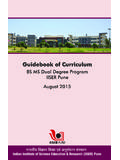

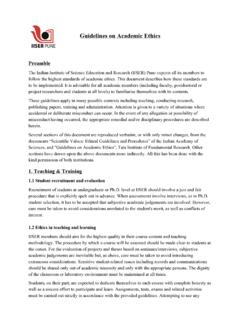

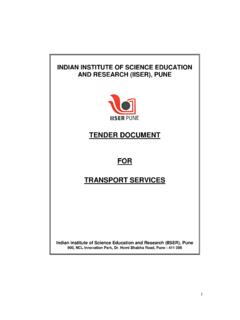



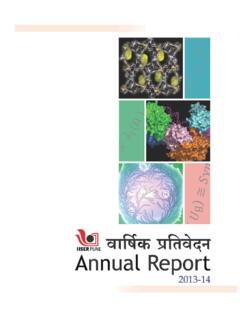
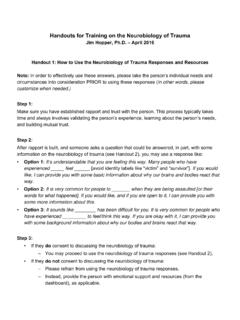








![Neurobiology of Addiction presentation [Autosaved]](/cache/preview/a/c/c/6/9/8/f/8/thumb-acc698f8aa428f97a971250b5c81102d.jpg)